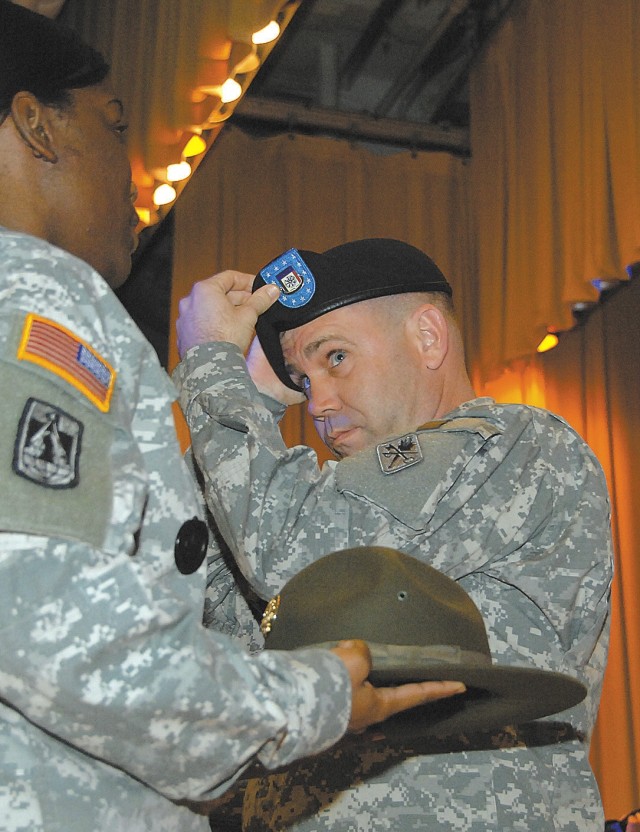The last Fort Lee drill sergeants have switched headgear but not responsibilities. More than 20 noncommissioned officers from the 23rd Quartermaster Brigade donned their berets during an end of trail ceremony Jan. 30.
The ceremony also marked the end of a long-held tradition of drill sergeants leading advanced individual training Soldiers at Fort Lee since 1985. Fort Lee is one of several AIT locations that are transitioning from drill sergeants to platoon sergeants and squad leaders.
The transition is part of the U.S. Army Training and Doctrine Command's aim to increase NCO contact time with AIT Soldiers and to provide a bridge from total control in Basic Combat Training to limited control at a Soldier's first unit of assignment, according to a memo by Gen. William S. Wallace, TRADOC commanding general.
Results of pilot programs since May 2006 indicated that the change from drill sergeants to platoon sergeants had no negative effect on discipline or standards.
"The program works because it increases the speed of the Soldierization/maturation process by requiring Soldiers to take responsibility for themselves and others while providing decision making opportunity versus merely obeying orders," Wallace said.
During the end of trail ceremony, Command Sgt. Maj. Michael Gilmore, 266th QM Battalion, emphasized to the last drill sergeants they still hold the responsibility of training Soldiers even though they leave the drill sergeant hat behind.
"You (NCOs) are still charged with being a role model and mentor," Gilmore said. "You will still have to field questions and train on the weekends, but more importantly you will be no less a noncommissioned officer, no less dedicated, no less committed. So none of the things that really matter are going to change."
Staff Sgt. Lemakius Gardner, Company I, 266th QM Bn., was a drill sergeant for a year and four months. When she first arrived on Fort Lee as a new drill sergeant she was assigned to a company that had already transitioned to platoon sergeants. That meant she had to remove her drill sergeant hat for the two weeks she stayed with that company.
"It didn't make a difference to me because I became a strong NCO when I became an E-5," Gardner said. "Taking the hat away didn't make me any less strong."
Now that she has six months left in the Army and once again has donned her beret, Gardner will continue doing the same job of marching and training Soldiers as a platoon sergeant.
Sgt. 1st Class Jamel Bates, Headquarters and Headquarters Company, 266th QM Bn., said wearing the hat was the most powerful and significant job he has ever encountered in the Army.
"The drill sergeant hat signifies that you are above the above, but as an NCO you don't let it get to your head. Your job is train these Soldiers to get on the right path because they are people's family members; these are people's kids that you are dealing with," Bates said.
As a beret-wearing NCO, Bates said his job of mentoring and training Soldiers will continue but he attributes his ability to train others at a high level because of his training to become a drill sergeant.


Social Sharing